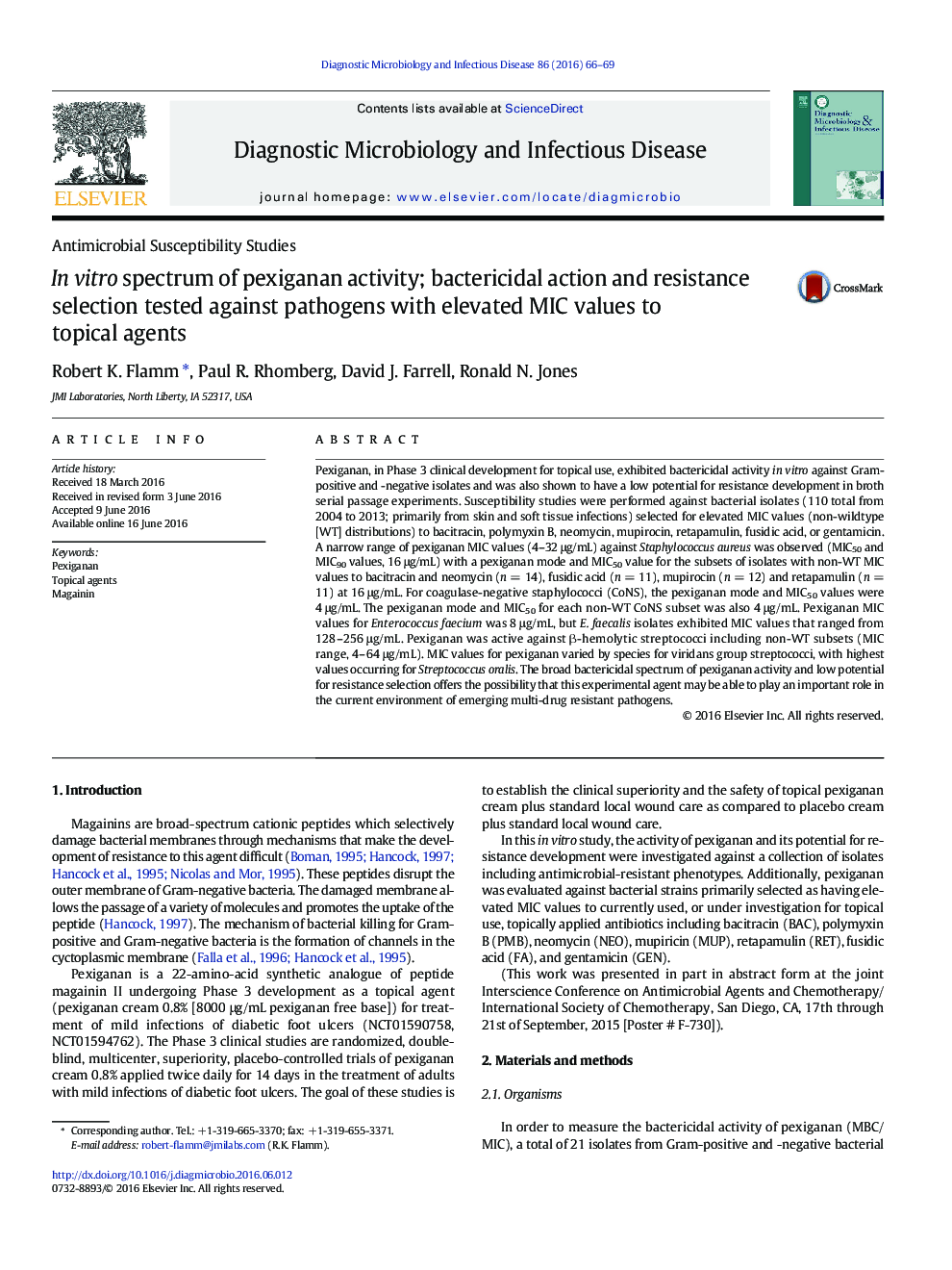| Article ID | Journal | Published Year | Pages | File Type |
|---|---|---|---|---|
| 3346793 | Diagnostic Microbiology and Infectious Disease | 2016 | 4 Pages |
•Pexiganan was active against bacteria with elevated MICs to topical agents.•It exhibited bactericidal activity and a low potential for resistance.•Further study in infections where MDR bacteria occur is warranted.
Pexiganan, in Phase 3 clinical development for topical use, exhibited bactericidal activity in vitro against Gram-positive and -negative isolates and was also shown to have a low potential for resistance development in broth serial passage experiments. Susceptibility studies were performed against bacterial isolates (110 total from 2004 to 2013; primarily from skin and soft tissue infections) selected for elevated MIC values (non-wildtype [WT] distributions) to bacitracin, polymyxin B, neomycin, mupirocin, retapamulin, fusidic acid, or gentamicin. A narrow range of pexiganan MIC values (4–32 μg/mL) against Staphylococcus aureus was observed (MIC50 and MIC90 values, 16 μg/mL) with a pexiganan mode and MIC50 value for the subsets of isolates with non-WT MIC values to bacitracin and neomycin (n = 14), fusidic acid (n = 11), mupirocin (n = 12) and retapamulin (n = 11) at 16 μg/mL. For coagulase-negative staphylococci (CoNS), the pexiganan mode and MIC50 values were 4 μg/mL. The pexiganan mode and MIC50 for each non-WT CoNS subset was also 4 μg/mL. Pexiganan MIC values for Enterococcus faecium was 8 μg/mL, but E. faecalis isolates exhibited MIC values that ranged from 128–256 μg/mL. Pexiganan was active against β-hemolytic streptococci including non-WT subsets (MIC range, 4–64 μg/mL). MIC values for pexiganan varied by species for viridans group streptococci, with highest values occurring for Streptococcus oralis. The broad bactericidal spectrum of pexiganan activity and low potential for resistance selection offers the possibility that this experimental agent may be able to play an important role in the current environment of emerging multi-drug resistant pathogens.
